The scoop of ice cream above, clotted cream Maras (MA-rush) ice cream to be specific, was nestled on top of a bowl of warm semolina halva with a spoon stabbed in the center for the whole duration of the photo shoot (you’ll see in the photo below). And the spoon stayed still for at least 20 minutes. All this was possible due to the core ingredient of Turkish ice cream: Salep.
Aside from a traditional winter drink, salep also refers to a powder of dried orchid tubers, used in thickening the delicious Turkish ice cream, which is indigenous to Kahramanmaras – a city in southeastern Turkey. The local orchids contain a nutritious starch-like polysaccharide (complex carbohydrate) called bassorin, which accounts for the thick consistency. The resulting ice cream is extremely elastic and chewy and stays solid for quite a long time. The spoon stabbed in the center of the scoop was intended to summarize this magical quality. Unfortunately, since the top part of the photo was cropped, you weren’t able to see that in the published article very clearly. Aren’t I lucky to have a blog with endless space to fill?
So, this is the original photo:
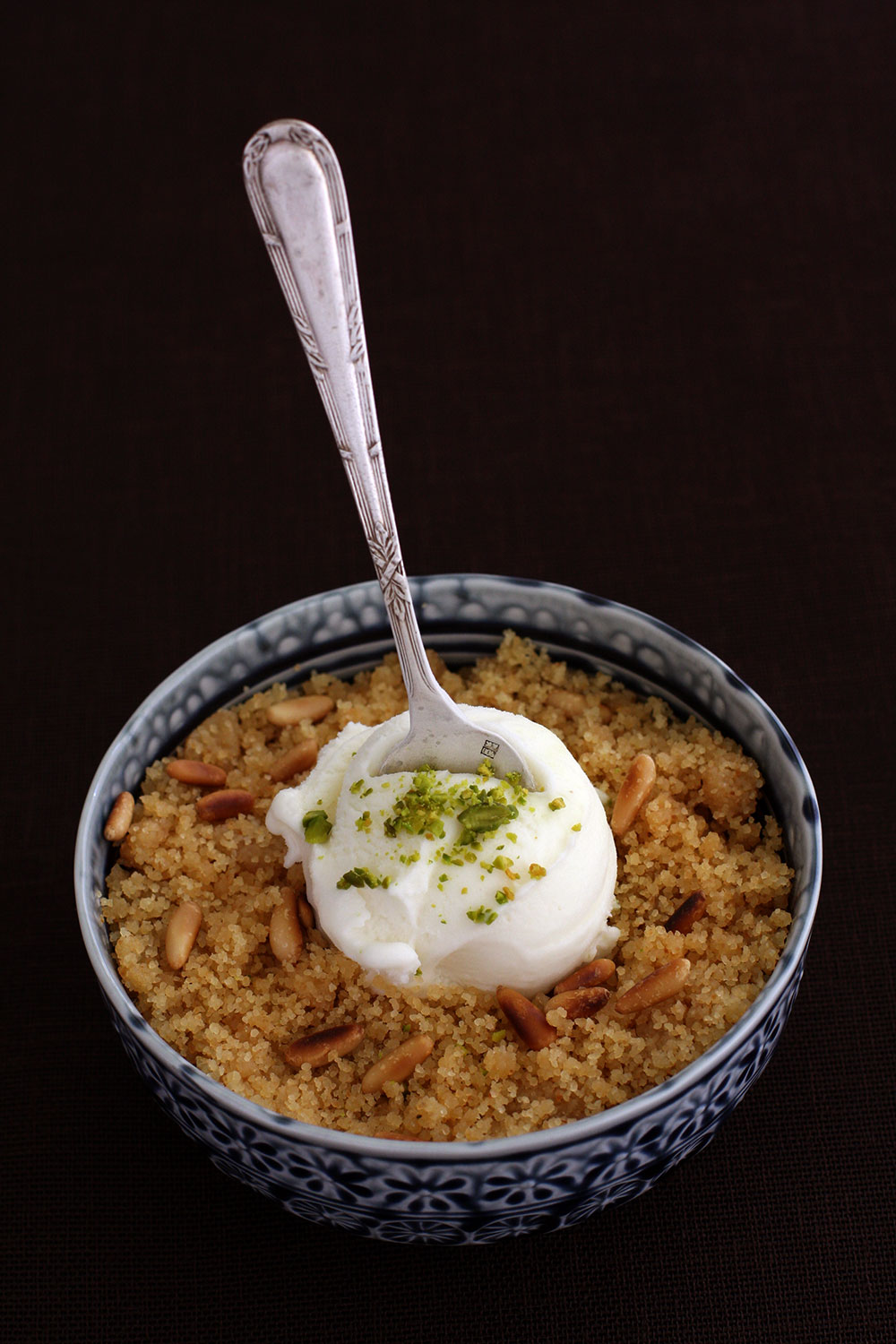
I recall a heated discussion at the comments section of David’s Pistachio Gelato post.
A couple of his readers commented that only Turkish people get to enjoy the ice cream made with salep because we want to keep it all to ourselves. While that claim sounded possible, knowing how bountiful and hospitable my culture is, I wanted to dig a little deeper to find out the reason why.
While it’s true that we can’t get enough salep for our ice cream – and you will definitely not blame us if you had tasted it – the reason why salep isn’t exported is not just that. The orchids (mainly Cephalanthera Kotschyana and Dactylorhiza Osmanica among 38 others) from which salep is extracted are becoming extinct.
Apparently, 1000 orchids are needed for 1 kilogram of salep powder, which is valued at around 200 USD. A mid-sized ice cream factory uses up to 12 million orchids per year. Because of this serious threat, it is forbidden to export.
After a few phone calls, I learned that one of the largest producers of Maras ice cream grows its own orchids. It is not a child’s play, let me tell you… The secret is in the ingredients: goat’s milk, salep and sugar. And not just any milk or salep. The importance of the local ingredients is so paramount that all the production takes place in Kahramanmaras and the ice cream is shipped to other cities from the original factory. It is impossible to achieve the same taste with a goat’s milk from elsewhere.
The process starts with picking the tubers. After careful inspection, the tubers that pass the quality test are boiled in milk (or water) and then dried under shade to maintain its color and consistency. Once grinded, it is then added to the goat’s milk with sugar and mixed in huge containers for a specified amount of time. Finally, other flavorings are added and the ice cream is ready for packaging and freezing.
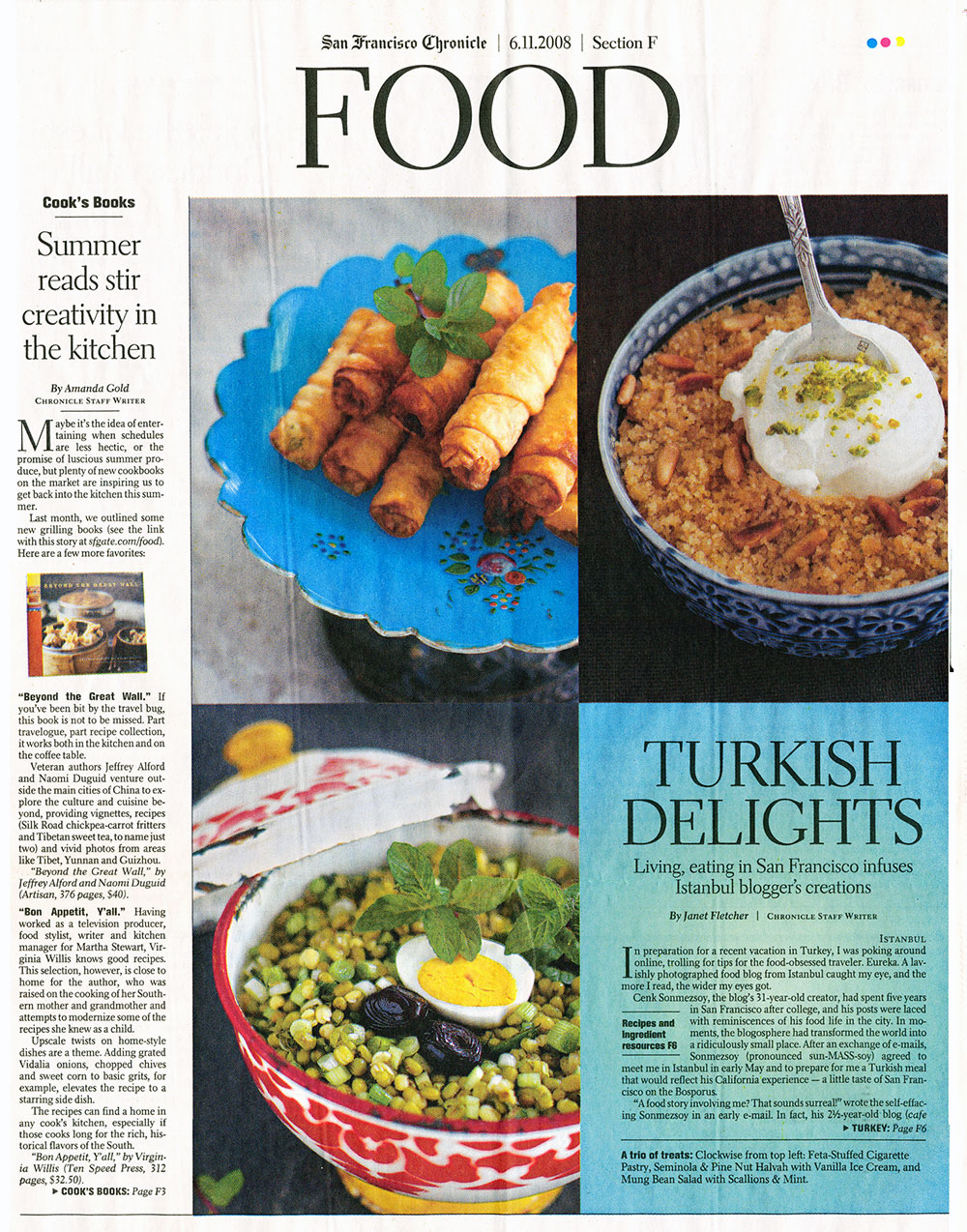
So there you have yet another reason to visit Turkey.
On a different note, as promised, here’s my dinner table with all the props I gathered from friends for the article. I laid them out a week before Janet arrived and stared at them for hours.
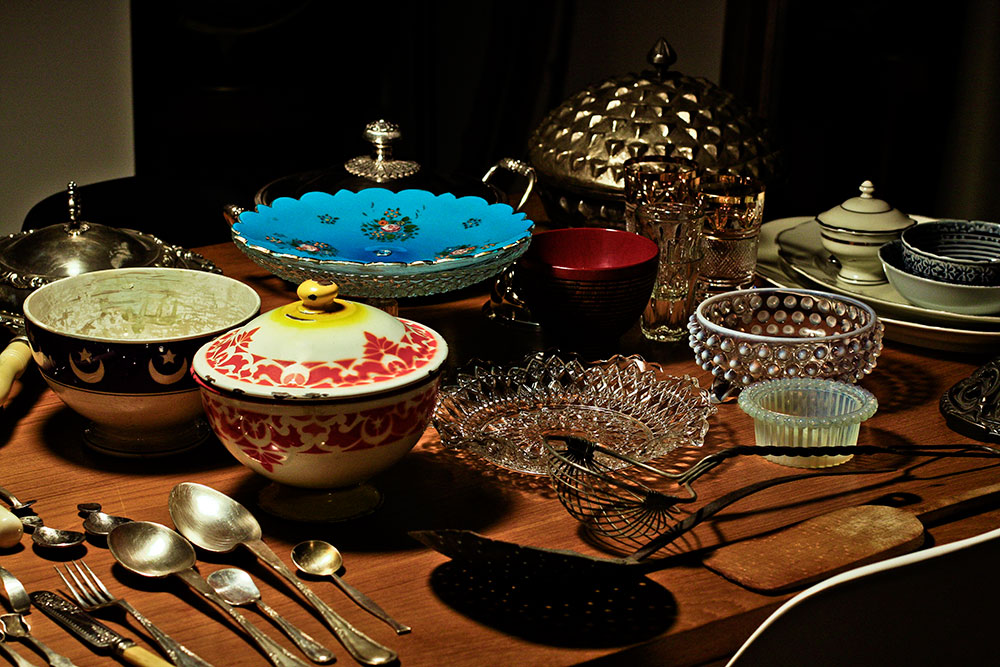
The below recipe is inspired by the delicious Vietnamese Coffee I first tasted at The Slanted Door (yes, that restaurant again!). Semolina Halva is traditionally prepared with a mixture of milk and sugar or water and sugar. The substitute (sweetened condensed milk) was right on spot. This halva has exactly the same texture with all the others I have tasted in restaurants, but developed a unique caramel taste thanks to the delicious sweetened condensed milk.
The most important part of the recipe is cooking the semolina until it develops a golden color. I tested the recipe many times and concluded that the right color is achieved after 20 minutes. The photo Doug took during the process is much more explanatory:
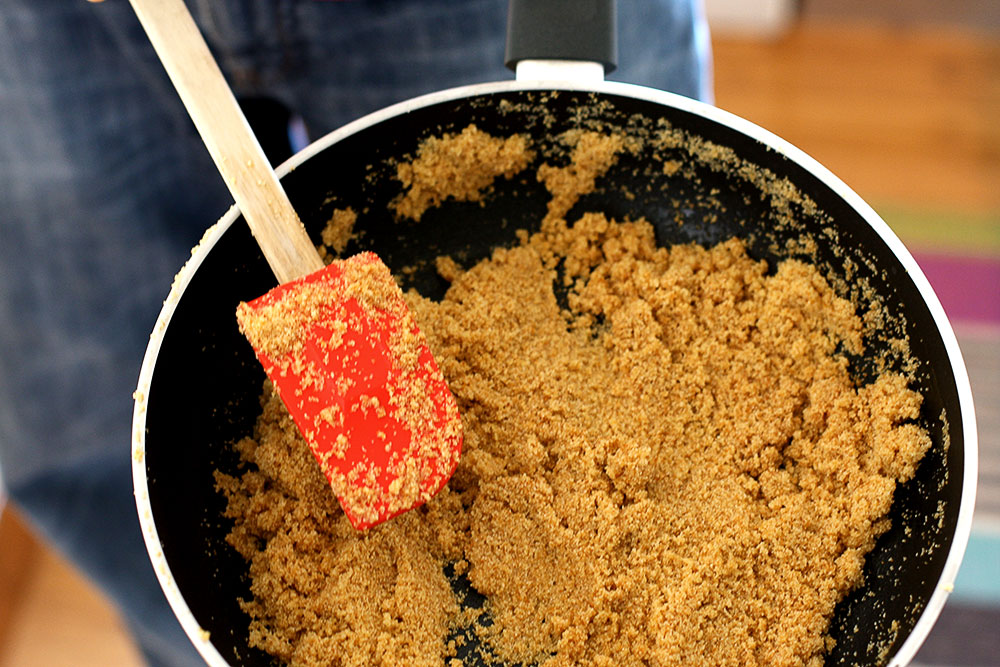
SEMOLINA HALVA RECIPE
4-6 servings
Ingredients
- 6 tablespoons (80 grams) unsalted butter
- 2 tablespoons canola oil
- 1+1/3 cup (250 grams) semolina
- 1/4 cup (50 grams) pine nuts, toasted
- 1 can (400 grams) sweetened condensed milk
- 1+1/4 cup boiling water
- 4 scoops of vanilla or pistachio ice cream
Method
- Place butter and canola oil in a heavy-bottomed, wide skillet with a lid and melt over medium heat.
- Add semolina and stir constantly on medium heat, until the semolina is cooked and golden brown, about 20 minutes.
- Meanwhile, combine sweetened condensed milk and boiling water in a small saucepan and keep hot over medium low heat.
- When the semolina develops its golden color, immediately add the hot milk (be careful, it may splatter) mixture through a sieve, mix, cover and let it cook on medium heat for about 15 minutes, stirring the halva every 5 minutes with a spatula.
- Take the skillet off the heat, place a couple of paper towels over the skillet and secure by placing the lid. Let steep for 15-20 minutes until extra moisture is absorbed.
- Stir pine nuts into the halvah. Put about 1/2 cup warm halvah into each of four to six bowls.
- Top with a scoop of ice cream. Garnish with pine nuts and pistachios.
- Serve warm.
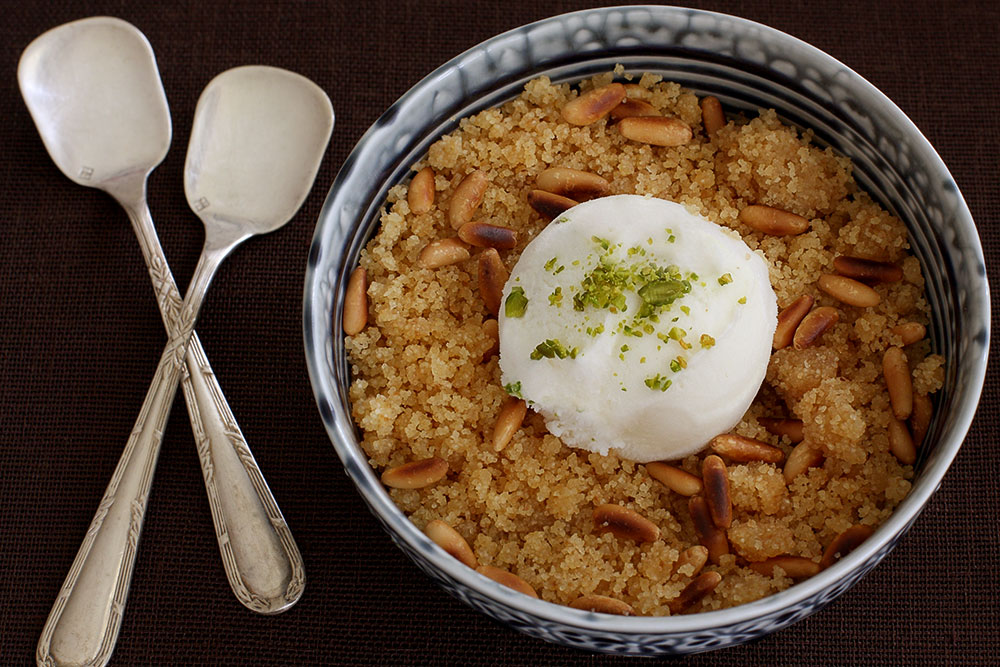
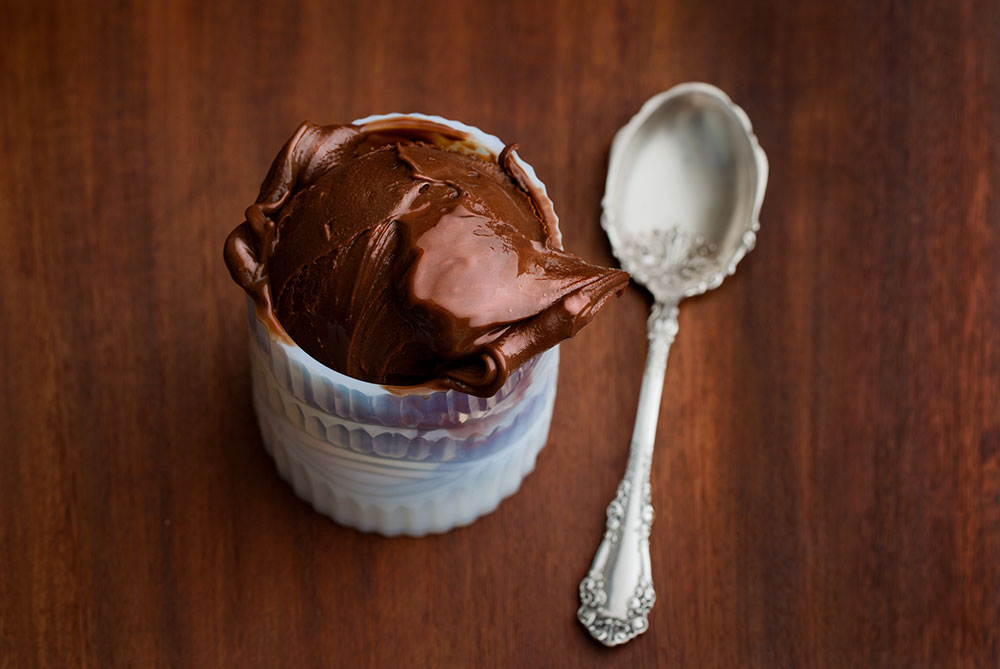
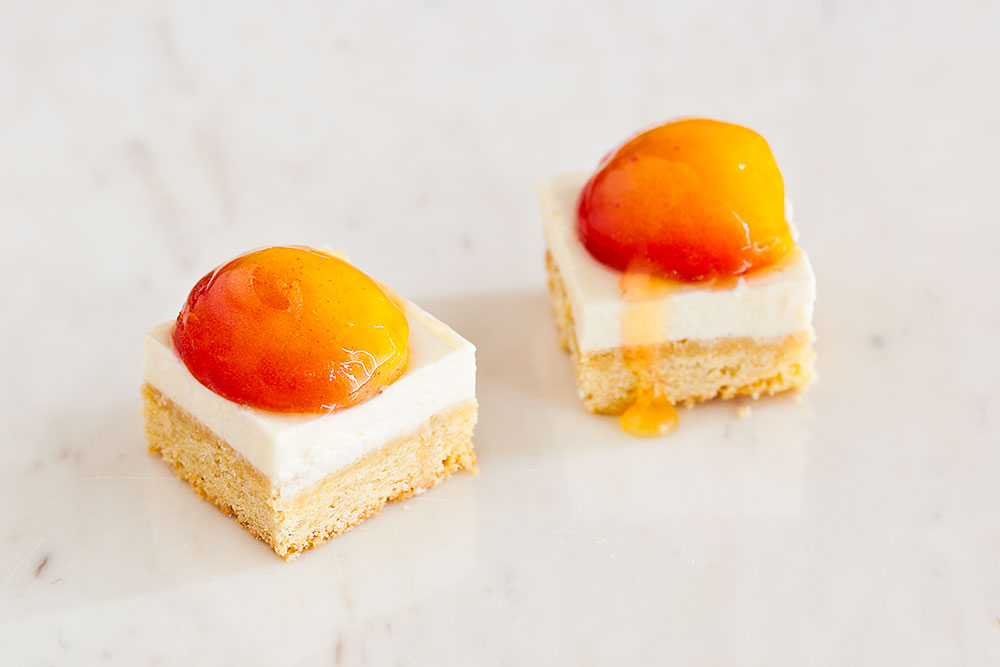
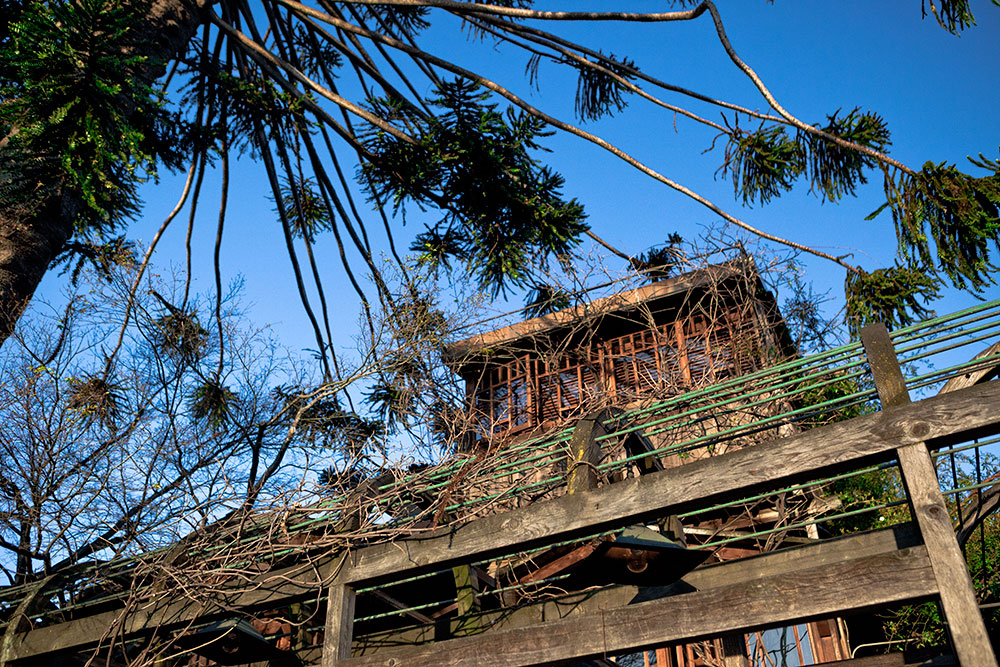
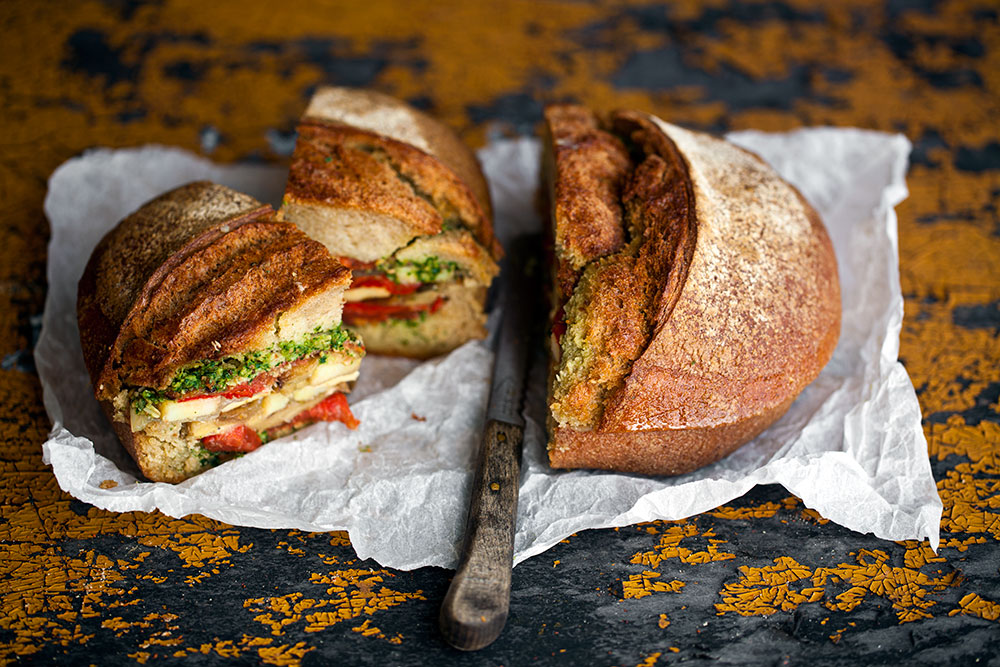
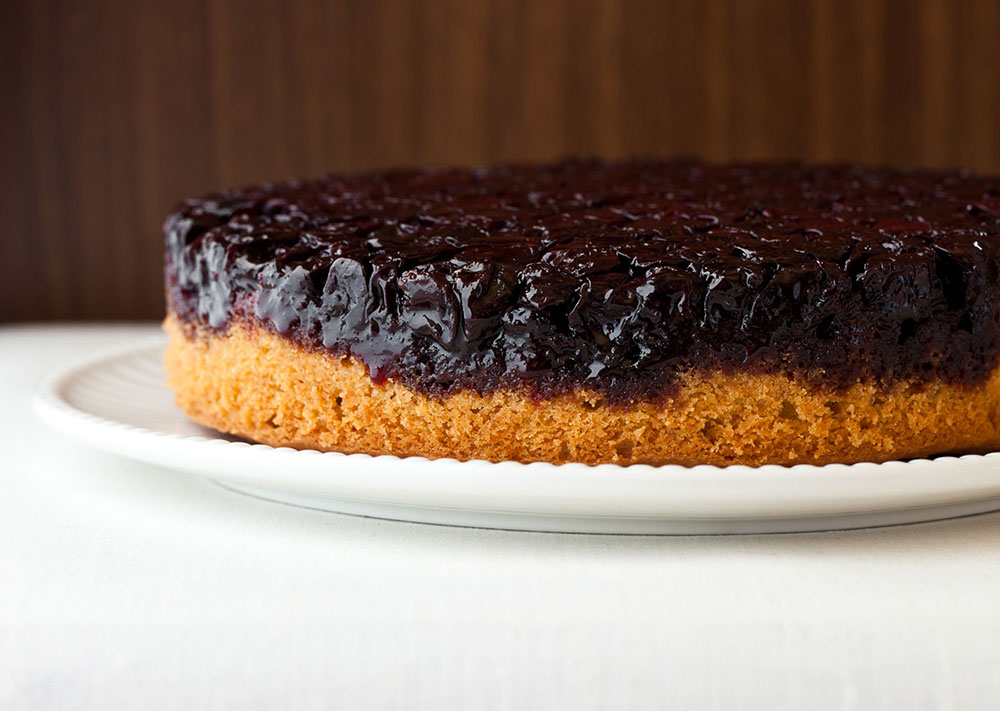
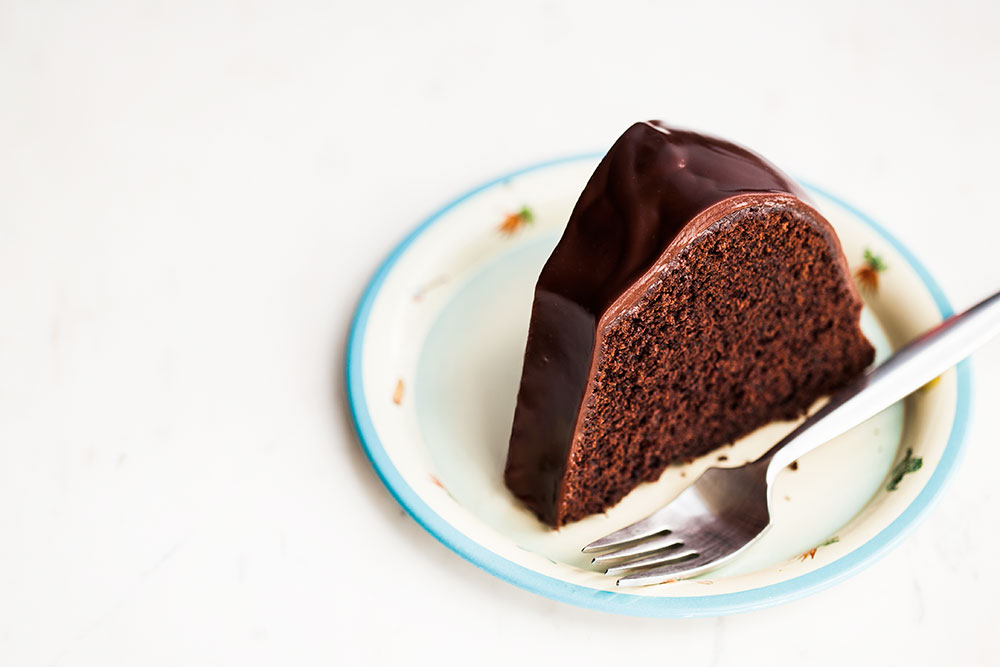
ooooh…magical indeed!
I too miss Slanted Door – I used to live near Mission District and it was the best place to just “stop over” for lunch!
Now…I’d have to pay $500 for an airplane ticket to stop over for lunch!
Cenk,
I think it’s time to try the Salep you’ve kindly given me 🙂 The recipe sounds fabulous and your photos are absolutely lovely.
Oh and I loved Slanted Door too… kxx
Jaden – I think I liked the cozy Mission branch much better than the new one. The food is always great though..
Keiko – I like the way you think!! Good luck! But, unfortunately, the one I gave you is for the “drink” salep. The one I am talking about is the actual powder of the dried tubers, which isn’t really available in food markets.
Cenk, Next time add some sherreded & unsweetened kefir cheese (aka mozzarella & or lightly salted Kasar). The cheese melts and give it this azaming texture. Serve warm & enjoy! I made some for Kandil.
Although I can more or less go to the Slanted Door whenever I want (ie., I have extra money in my pocket), I’d much rather visit Mado and try that ice cream.
I am fascinated by this whole discussion of Turkish ice cream. Thank you for the education.
This is such a great post! An enticing recipe, some interesting food knowledge, beautiful photos – can it get much better than that?
I’d never heard of salep and I’m sorry to learn that the orchids used to make it are going extinct.
Congrats on the SFGate article!! Very cool.
I can get Maras ice cream in Hong Kong? I love globilization.
Isn’t it great how sweetened condensed milk has this ability to brighten up so many desserts?
wow, interesting read and delicious looking dessert!! There is always “another” reason to visit Turkey on your blog Cenk, trust me!!
I got served plenty of this halwa in school growing up and was never really thrilled about it…but if someone had served it to me with the Maras ice cream, I would’ve gobbled it up. I love it now regardless. You’ve made it look beautiful, and I had no idea how salep was produced.
Oh, the Turkish icecream… Is it the same with that dondorma thing??? I loved it… both the taste and how stretchy it is… It was fun to look at it. Definetely worth visiting Turkey again for that (and of course other stuff, except for these very tenacious carpet sellers. They are so good and charming, we bought 4 during our last trip, we don’t have any space for more unless we moved to a bigger house.)
So it’s time for Mado to open a branch in San Francisco!!! Can you convince them to do that??In return, we can ask Charles Phan to open the Slanted Door to Istanbul!
The halwa looks wonderful Cenk! we make it a lot in India, but use finer semolina and more ghee(clarified butter):) loved the idea of topping it with ice cream! yummy:)
The turkish grocery/take-out place nearby just started offering semolina halva. They sell it shaped in soft balls – as if it had been scooped on to the cookie sheet with an ice-cream scoop — so you can eat it out of hand. It’s delicious! Is it ever served this way in Turkey?
Aysegul – Thanks for the suggestion. I’ll give it a try.
tangobaby – Glad you liked the dessert.
Ari, MariannaF, MPG, Mansi – Thanks!
AppetiteforChina – Yes, you can! Isn’t it great? So, did you try it?
Mari – Yes, it’s the same thing. If you can get C. Phan to open a SD in Istanbul, then I promise to convince the Mado guys!
Stacey – I haven’t seen that presentation before but I am sure it is equally delicious!
Wonderful article! And i just love the recipe… got to try it!!
Hi Cenk
Would you be so kind and provide me a good recipe for Salep Ice Cream?
Aysegul – I don’t have a recipe for salep ice cream but I hear Greg Malouf included one in his latest book “Turquoise: A Chef’s Travels in Turkey”. Hope this helps.
We were wondering why all the ice cream we had in Istanbul had this elastic property. Thanks for the great explanation!
Hi, first of all it looks wonderful – reminiscent of a dessert I once tasted in a Vietnamese restaurant. I just wanted to ask, why is it called “halva”? From what I know, halva is made of sesame seed paste – at least that’s what it means in Hebrew and Arabic – maybe in Turkish it means something different..
Maya – Halva refers to many different desserts in Turkey. The one you described is one version, this is another (semolina-based).
Dear Cenk:
Your blog has gotten me all worked up over Maras. I’ve been to Turkey nine times and have never had a taste! So, while in New York City this past week, I stopped by the great Kalustyan’s spice shop on Lexington Avenue. I asked for salep powder and was sold a box of “Sahlab Starch Pudding Powder Mix” made in Beirut. The ingredients label says it is “Maize starch – Sugar – Pure Sahlab (Roots of orchids Mascula).” Can this be used to make Maras? Do you have a recipe to share?
George – I am not familiar with the mix you mentioned, so I have no idea if Maras ice cream can be made with it. I am also not very familiar with the Maras ice cream recipe, so sorry but I can’t share. Please allow me some time to research more about it and hopefully I’ll revisit the subject with a post.
Cenk:
Just did some online research using your information. Bassorin is a complex of compounds. It is also present in large amounts (60% — 70%) in gum tragacanth from the Astragalus spp. that grow in Turkey and Iran. I see that that can be purchased in the US from a Turkish source. And, yes, it is around $200.00 a kilogram from that supplier as well. Can Maras be made using that instead? Gum tragacanth is described as odorless and tasteless, so I assume pure salep powder is as well. Thus, it is only there to contribute the texture, which is what has me intrigued. I believe gum tragacanth is a big item in the kitchens of molecular gastronomy chefs such as Ferran Adria in Spain. No? Your thoughts?
Dear Cenk:
Fair enough! This sounds like a worthwhile project for those of us who believe that Kitchen Space is the Final Frontier. Te?ekkür ederim!
hi cenk, your helva looks divine! can you tell me where i can find condensed milk here in Istanbul b/c i have only seen it once and it was crazy expensive compared to the US. or do you have a substitution? i tried to make irmik helva with milk, but every time i added the milk, my beautiful caramel colored helva turned pale. any suggestions? does cooking it again after adding the milk turn it brown again? thanks!
Jade – I used to buy sweetened condensed milk in a little shop in Etiler that sells baking supplies, but they don’t sell it anymore. There’s no substitution. You have to do it at home. Here’s a link to a recipe.
Right, let me say that my stay in Turkey made me discover two things I love: Mado ice-cream and Semolina Halva!!! So this post is perfect! Even though I can’t get hold of the ice-cream here in the UK, I’ll definitely make the Halva! Do you think I could shape it into a cake? I ate at a few Kofte places where they served it in slices as desert and that seems pretty cool to me.
(PS: thanks so much for your travel tips, I did check out quite a few, and I loved Ciya in Kadikoy, as well as the food shops there)
All the best,
Anne
Anne – Glad to hear you enjoyed your stay. You can definitely shape the halva into a cake. In fact, most of the restaurants encase the Turkish ice cream with semolina halva and serve it warm. You can use a small bowl for that kind of presentation.
Hey Cenk,
I made the Halva the other day, it’s delicious, exactly what I was craving 🙂 I took some photos of it:
http://www.anneskitchen.co.uk/sweet/pine-nut-halva-a-turkish-influenced-breakfast/
Thanks for the recipe!
Anne
I have acquired two boxes, 250 grams each, of “milker” brand salep powder (sütlü içecek tozu is printed underneath the word “salep” and then below is written “Geleneksel Lezzet.”) Could this be used to make Turkish ice cream or is it only suitable for the hot drink?
George – That is only suitable for the hot drink. You can find the powder suitable for ice cream making at some of the stands at The Spice Market.
Hi,
update: Mado cafe is at DIFC in Dubai:
Basement 1, The Gate Building, Dubai International Financial Center
(Marble Walk) 04 370 0377
Hey,
I’ve been eyeing up your halva recipe for a while (forever).
Thank you for sharing it! My nene used to make a lot of halva (we used to call it helva), traditionally she made it with cinnamon flavoured serebet and topped it with boiled almonds. Have you ever had it like that before? Thanks for sharing your tip on frying the semolina for 20 minutes! I’ve only ever fried for a min of 5 minutes, but I will deffo be making it your way from now on !
Emine Hassan – I haven’t, but it sounds great.